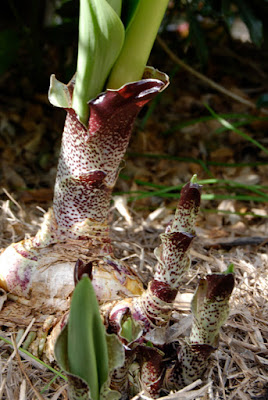Listening to our favourite Sunday morning music show, Chicken Hotrod on 2RRR community radio, I was struck by the idea that there's a hundred different ways to sing a song and come up with good results.
Well folks, it's the same with growing potatoes. There's a hundred different ways to do it, and all of them can come up with good results.
I was Googling "when to hill around potatoes" and I came up with (maybe not a hundred) but lots of different ideas. Some said to start doing it when plants are 6 inches high, others said to wait until when plants are 10 inches high, when plants are 12 inches high, even one daredevil advocating waiting until her plants were 16 inches high.
As to "what" to use when hilling around your spuds, some said "just use compost", others said "just use straw", others said "mix up straw and compost". There were votes for "potting mix" and some for good old "garden soil".
I'll bet you that all these good folk advocate their methods because they worked for them. So, I think the big message to newbie spud growers is just to relax. No matter what you do will probably work just fine. So, here's what I did this morning.
The easy way to mix it up is in a bucket or trug. Compost is an excellent choice because it's a gentle fertiliser that helps to feed the potato plants. The straw is nice and light, so the drainage of water through the bag should be nice and free. Besides, I just love the look of straw ... it's so farmyard.
I've got a couple of little "later starter" shoots poking through, so I'll give them a few more days to grow taller and catch up with the others, then I'll finish my first hilling job next weekend by hilling around them.
About a month from now, the plants should have grown even taller. Next time I'll unroll the sides of the bag so it is at full height, and I'll complete a second and last "hilling" around the plants. After that all I have to do is water the bags if Huey hasn't been kind enough to help out with some rain every couple of days.
























































